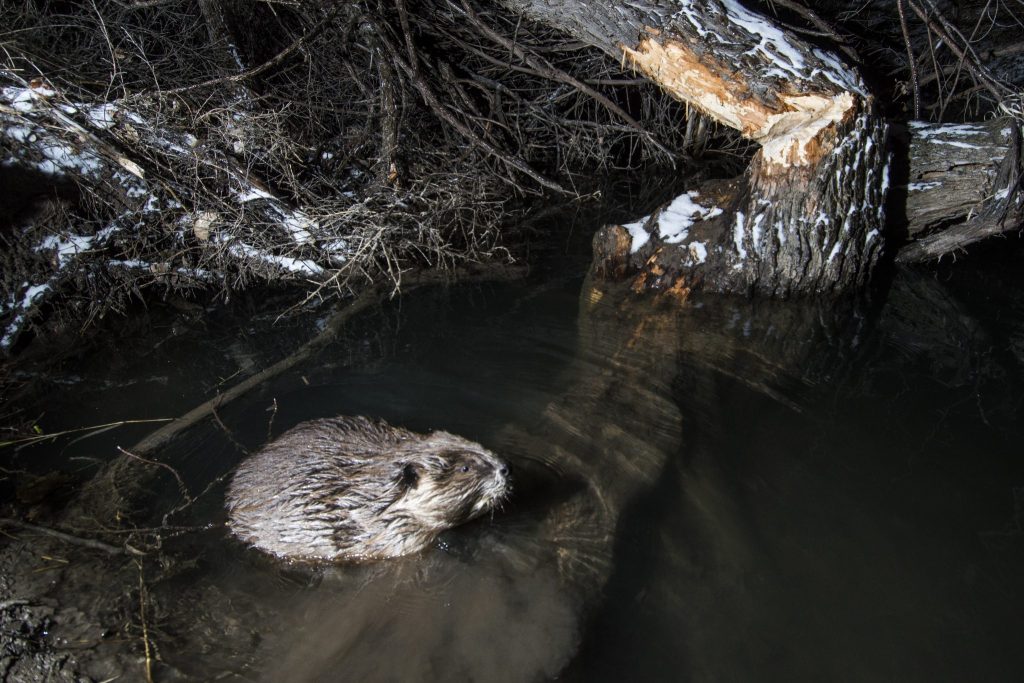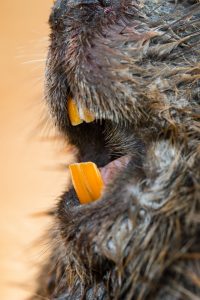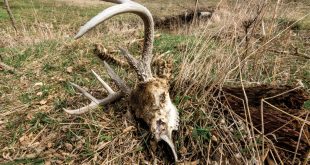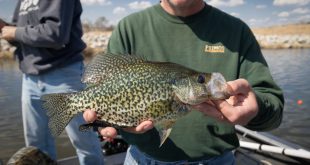Enlarge

Story and photos by Justin Haag
Anyone who has watched a North American beaver (Castor canadensis) gnaw through a tree trunk has surely been in awe of its proficiency. Using teeth to whittle on wood, after all, is a task neither appealing to humans nor something the American Dental Association advises us to do.
Those four orange incisors that protrude as much as one inch from the top and bottom of a beaver’s mouth comprise just one remarkable feature of North America’s largest rodent, and perhaps its most important tool. They allow the beavers to not only cut timber for building lodges and dams, but also allow them to eat some of their favorite foods – tree bark and the thin layer of growing tissue beneath it, known as cambium.

Remarkably, the beaver’s incisors continue to grow throughout their life span, which is typically 10-15 years. In fact, the beaver’s front teeth can grow as much as four feet per year – a figure greater than its body length.
If a beaver would not chew, his teeth would surely become too long to be useful. The incisors are designed to abrade and are self-sharpening. With strong enamel in front and softer dentin in the back, they are honed to a sharp edge with each bite. A set of 16 molars distributed evenly toward the rear of their mouths complete the chewing process.
One would think the incisors might be pearly white, considering that they are constantly being replaced by new material. However, the orange coloration of the front teeth is not directly from food stains, but rather is indicative of enamel rich with iron – the same mineral that makes blood red. That iron, as opposed to the magnesium found in the enamel of most animal teeth, makes beaver teeth especially strong, hinders decay by resisting acid and bolsters strength.
The beaver is certainly worthy of awe, not only for its increasingly appreciated value to wetlands but also for its four orange tools. ■
 Nebraskaland Magazine
Nebraskaland Magazine


